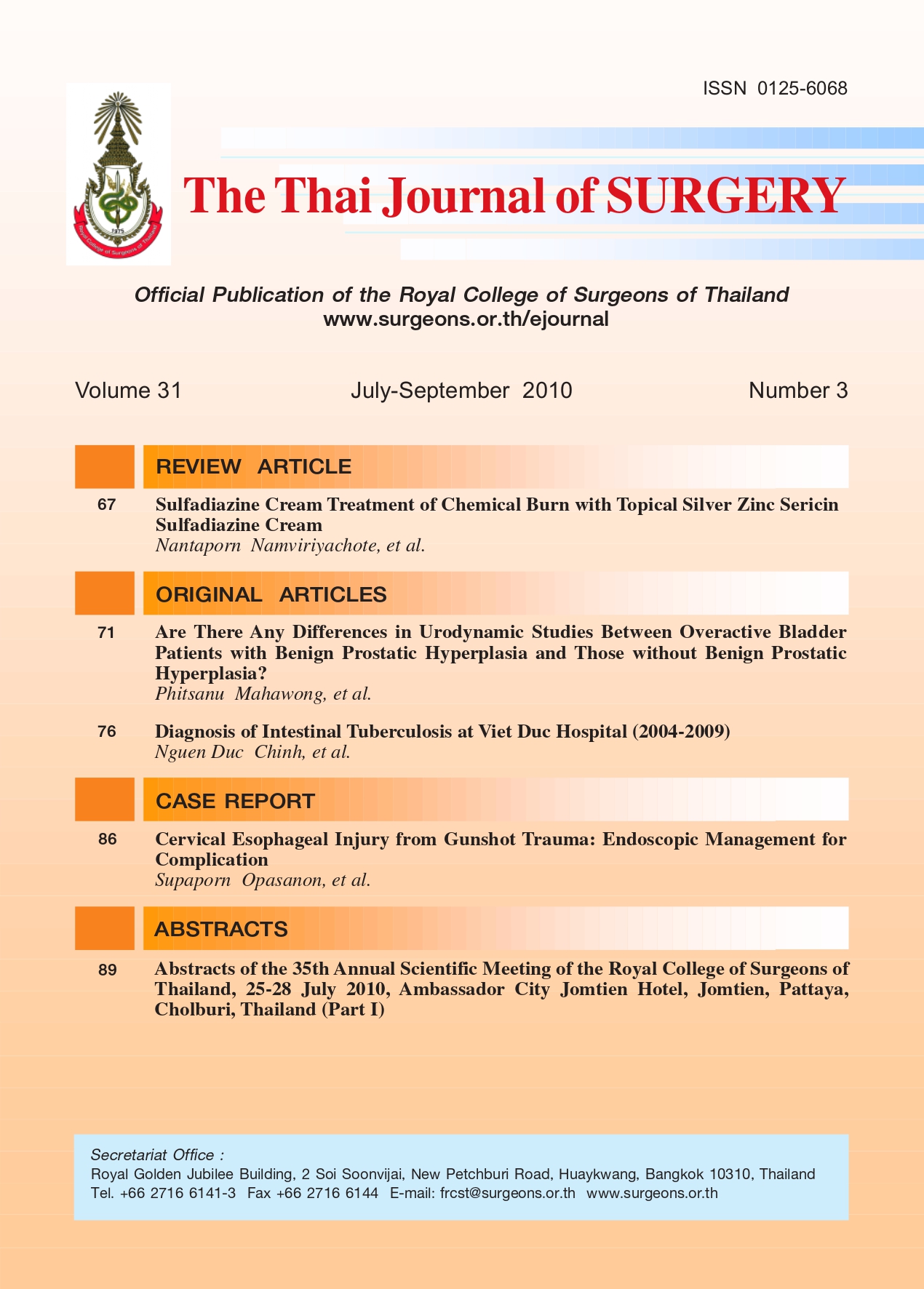Cervical Esophageal Injury from Gunshot Trauma: Endoscopic Management for Complication
Keywords:
esophageal injury, endoscopic management, gunshot traumaAbstract
Penetrating esophageal injuries are common, primarily caused by gunshot and stab wounds. It can result
in potentially life-threatening injuries that demand immediate attention and intervention. Clinical signs of
esophageal injury infrequently present initially. Blast effect can cause injury far from the bullet track through
the release of high energy with impact. Physicians may underestimate tissue damage from this effect. Early
detection of esophageal injuries remains difficult and diagnosis more than a 24-hour delay is associated with a
significant morbidity and mortality. Therefore they require a high index of suspicion to diagnose and treat
properly.
Treatment of esophageal perforation ranges from surgery to conservative treatment. In case with leakage
and no sepsis, conservative treatment should be considered. However, conservative treatment would likely fail
if an associated stricture exists. Correction of the stricture allows quicker recovery and higher chance to
succeed. Meticulous examination using endoscopy plays an important role and should be incorporated in the
armamentarium of the existing treatment options for esophageal perforation.
References
management of external penetrating cervical esophageal
injuries. Ann Otol Rhinol Laryngol 1994;103:863-71.
2. Brinster CJ, Singhal S, Lee L, et al. Evolving options in the
management of esophageal perforation. Ann Thorac Surg
2004;77:1475-83.
3. Back MR, Baumgartner FJ, Klein SR. Detection and evaluation
of aerodigestive tract injuries caused by cervical and
transmediastinal gunshot wounds. J Trauma 1997;42:680-6.
4. Flowers JL, Graham SM, Ugarte MA, et al. Flexible endoscopy
for the diagnosis of esophageal trauma. J Trauma 1996;40:261-
6.
5. Madiba TE, Muckart DJ. Penetrating injuries to the cervical
oesophagus: is routine exploration mandatory? Ann R Coll
Surg Engl 2003;85:162-6.
Downloads
Published
How to Cite
Issue
Section
License
Articles must be contributed solely to The Thai Journal of Surgery and when published become the property of the Royal College of Surgeons of Thailand. The Royal College of Surgeons of Thailand reserves copyright on all published materials and such materials may not be reproduced in any form without the written permission.



